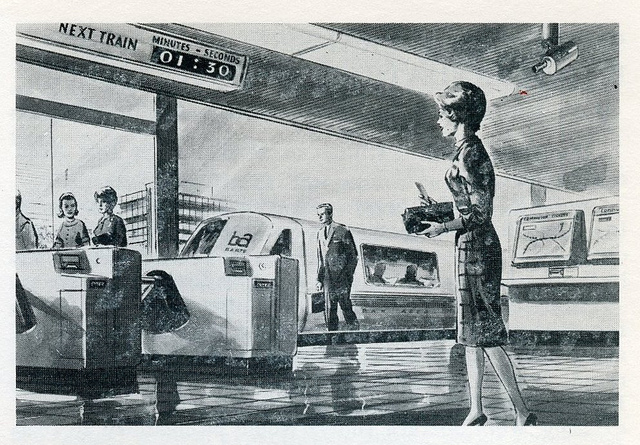
“You can’t get there from here” are words people seldom like to hear. Nor do they like being stuck in traffic jams. Or walking miles to get home from a train station or bus stop. People will pay good money for a house that can offer them an easy way to get to point B, wherever that may be.
Proximity to a freeway used to be the way to go, but in the face of increasing congestion, trains are an attractive way of doing the A-to-B thing. Trains glide past stalled traffic, and their riders are free to do whatever they choose. Compared to buses, trains are also relatively fast and smooth. In fact, they are such an attractive transportation proposition that when a new lines snakes out from a city, houses follow. But realtors would also have you believe another old saw—that a house near a train station is worth more than one that’s not.
It’s true that in many places real estate with nearby rail access is more expensive, but there are a number of other factors that could drive prices other than proximity to a station. Good schools often attract buyers, as do conveniently located grocery stores and shops. Despite these confounding variables, there are a number of studies that show train stations are, in fact, behind a rise in neighboring property values.
One early study found the San Francisco Bay Area’s BART system had a big impact on housing prices near its stations—before it even opened. Between 1960 and 1967, prices within six blocks of the future Glen Park station in San Francisco rose more rapidly than the overall average for the Outer Mission district in which it was located. Another study discovered that house prices in many neighborhoods on Chicago’s southwest side benefitted from the opening of the Orange Line, which runs from the Loop (Chicago-speak for “downtown”) to Midway Airport. Just six years after the line opened, houses within 1.5 miles of the new stations appreciated in value almost 7 percent more than houses farther away.
The effect was also seen in London in the late 1990s when new stations were added to the Underground and Docklands Light Railway in South East London. Overall housing prices in the area rose 9.3 percent as a result, and people who lived closer saw even better returns. Frequency of service had an effect in London, as well. Houses near stations for Network Rail, a main line service that runs on average half as frequently as the Tube and light rail, fetched more when trains ran more frequently. One additional train per hour added 0.2 percent to a home’s value.
It even appears that easy train access is a bigger incentive to spend more for a house than good schools. In that same London study, houses that were one-quarter standard deviation closer to a train station appreciated more than twice as much as those near a school that was one-quarter standard deviation better in terms of performance. I suspect part of the difference is because trains are an amenity that appeals to more people than schools—not everyone has children, after all. It goes to show just how much people will pay for convenience.
Sources:
Davis, F.W. (1970). Proximity to a rapid transit station as a factor in residential property values The Appraisal Journal, 554-572
Gibbons, S., & Machin, S. (2005). Valuing rail access using transport innovations Journal of Urban Economics, 57 (1), 148-169 DOI: 10.1016/j.jue.2004.10.002
McMillen, D.P., & McDonald, J. (2004). Reaction of House Prices to a New Rapid Transit Line: Chicago’s Midway Line, 1983–1999 Real Estate Economics, 32 (3), 463-486
Original BART illustration posted by Eric Fischer.
Related post:
Do people follow trains, or do trains follow people? London’s Underground solves a riddle
Proximity sans convenience: Houses near train tracks and freeways